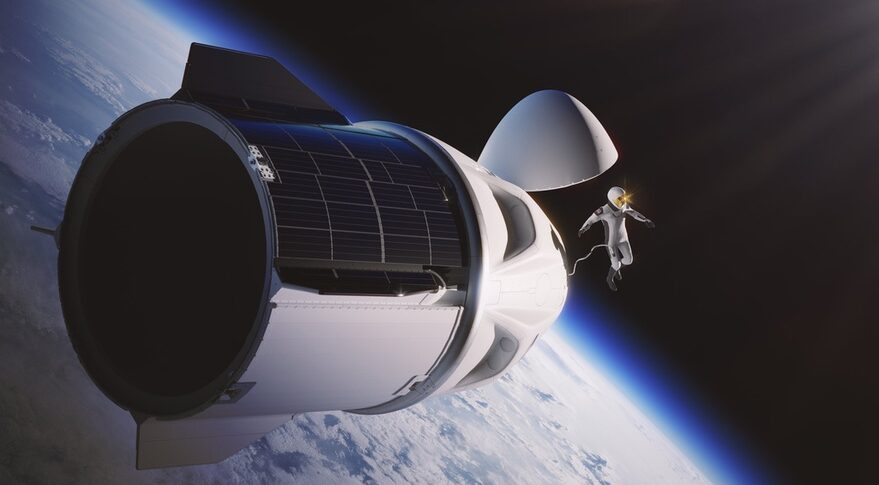LAS VEGAS — A billionaire-backed private astronaut mission on a SpaceX Crew Dragon has slipped from late this year to March 2023 and could be further delayed, in part for issues beyond its control.
The Polaris Program, an initiative announced in February by Shift4 founder Jared Isaacman, originally planned its first Crew Dragon mission, Polaris Dawn, to fly in the fourth quarter of this year. The four-person crew, which includes Isaacman, will perform the first spacewalk from a Crew Dragon spacecraft and fly to a higher altitude than previous crewed orbital spaceflights.
As recently as July, that mission was still scheduled to fly this year, with a projected launch in December. By September, though, the launch had quietly slipped to no earlier than March 2023, a date the Polaris Program confirmed Oct. 24 in an announcement of biomedical experiments it plans to perform on the five-day flight.
In a Oct. 24 statement to SpaceNews, Polaris spokesperson Sarah Grover said that the program reevaluated the December launch date in September based on the readiness of hardware, software and training for the mission, as well as the overall manifest of SpaceX missions. That led the program to move the launch to no earlier than March 1.
That date, too, is subject to change. “In addition to the development driven schedule risk, moving into the winter brings us into a busy period and our date could be directly impacted by ISS missions, which carry their own uncertainty,” she said. While Polaris Dawn is not going to the International Space Station, other SpaceX crew and cargo missions would launch from the same pad at Launch Complex 39A. That includes NASA’s Crew-6 mission to the ISS, tentatively scheduled for as soon as February 2023.
Another factor is the use of LC-39A for Falcon Heavy launches. “There is also uncertainty from the Falcon side as there are potential Falcon Heavy launches with government priority ratings in the mix,” she said. Those are likely the USSF-67 and USSF-52 missions for the U.S. Space Force, currently scheduled for early 2023 after extended delays.
She said the next evaluation point for Polaris Dawn is in November. “In the meantime we’ll continue to burn down development items and gain certainty in our manifest.”
That includes training for Isaacman and the other members of the crew: Scott Poteet, Sarah Gillis and Anna Menon. That training features preparations for a spacewalk, something not done on Crew Dragon or any other commercial mission to date, although the program has not disclosed details about it.
“We do take this very seriously,” Isaacman said of training in an Oct. 3 Washington Post webinar, with eight to nine months planned versus six months for Inspiration4. “We’ve got to get it right, because if we do get it wrong, this timeline gets reset in a big way.”
A second Polaris Program flight, also on a Crew Dragon, could go to the Hubble Space Telescope to reboost or service it, pending the outcome of a study NASA announced it was undertaking with SpaceX Sept. 29. The third mission would be the first crewed flight of SpaceX’s Starship vehicle. Neither Polaris nor SpaceX have announced dates for those projected missions.

